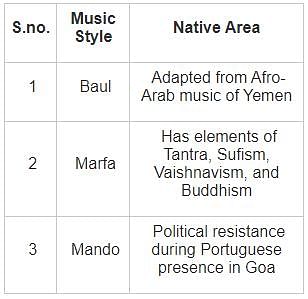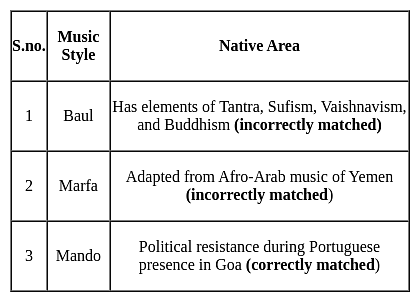Kerala SET Paper 2 Mock Test - 3 (History) - KTET MCQ
30 Questions MCQ Test - Kerala SET Paper 2 Mock Test - 3 (History)
Who headed the Sadar Nizamat Adalat at Calcutta established under Warren Hastings Plan of 1772?
Sir Charles Napier replaced which of the following as the British resident of Sindh?
| 1 Crore+ students have signed up on EduRev. Have you? Download the App |
Consider the following statements about the Quit India Movement:
- It was a natural corollary of the failure of the Cripps Mission
- It was launched at the Bombay session of the All-India Congress Committee
- Congress party was banned after the launch of the movement
- The Quit India Movement was not supported by the Muslim League
Which of the above statements are correct?
Which of the following statements about the agrarian structure of the Gupta period are true?
(i) In the first half of the Gupta period, the king or the state claimed theoretical ownership of the land, though in practice the peasants had ownership rights.
(ii) The Poona Copper Plate of Prabhavatigupta provides us sufficient evidence for land survey during the Gupta period.
(iii) An officer called Pustapala was in charge of land revenue collection at the district level.
(iv) The Gupta inscriptions from Bengal and Bihar authorise the grantees to make a further gift of their lands to others.
(v) The Gupta land grants in central India and western India give not only fiscal rights but also rights of judicial administration to the recipients.
Select the answer from the codes given below:
Consider the following statements.
1) In the third century B.C. Sanskrit served as the lingua franca of the country.
2) Sanskrit became prominent in the Gupta period.
3) It was in South India that the varna system arose, which came to prevail almost all over the country.
Choose the incorrect statements
The Rashtrakuta king who defeated the Pratihara ruler Nagabhatta II was
Direction: Answer the following questions by selecting the correct / most appropriate options.
Statement A): Both Jaina and Buddhist monks went from place to place throughout the year, teaching people.
Statement B): Supporters of Jaina and Buddhists built temporary shelters for them in gardens, or they lived in natural caves in hilly areas.
Which of the following statements is/are true?
(i) After weakening of power of Satavahana dynasty, Vakataka dynasty established its kingdom
(ii) First king of Vakataka dynasty was Pravar Sen (First)
(iii) Vindhya Shakti was son of Pravar Sen
Choose the correct option :Logographers, the predecessors of Greek historians, are MOST distinguished from Herodotus, the "Father of History," by their:
Consider the following statements, with reference to the Pali texts.
1) The peasants had to pay one sixth of their produce.
2) Taxes were collected through an intermediate landlord between the peasant and the State.
Choose the correct statement.
Consider the following pairs about Mughal Administration

Which of the pairs given above is/are correctly matched?
Which of the following characterize or characterizes the town planning of the Harappan Civilization?
1. They possessed great palaces and temples.
2. The use of burnt bricks in the Harappan cities is remarkable.
3. The Drainage System of the Harappan Civilization was poor.
Which of the statements given above is/are correct?
Which act provided some share to Indians in the administration of their county?
Consider the following statements:
Assertion(A):- We do not find many bronze objects in prehistoric times.
Reason(R):- Tin was scarce even in ancient times.
- Introduction of cash crops at the expense of subsistence crops
- Heavy taxation and land revenue systems
- Natural environmental fluctuations
- Immediate post-independence economic policies
- The effective response of the colonial administration
- The loss of millions of lives
- Being largely attributed to British colonial policies
Arrange the following Kingdoms in chronological order.
a. Bahmani kingdom
b. Vijayanagara Kingdom
c. Asaf Jahis
d. Kakatiyas
e. Mughals
Match List I with List II, and select the correct answer by using the codes given below the lists:
List - I
I. Firuz Shah Tughluq
II. Sikander bin Muhammad Manzu
III. Muhammad Sadiq Khan
IV. Abdul Hamid Lahori
List - II
a. Mirat-i-Sikanderi
b. Padshahnama
c. Futuhat-i-Firozshahi
d. Shahjahan Nama
Codes:
Which of the following coastal regions was the main trading point of the Portuguese?
Which of the following assertions best describes the ideology and methods of the Assertive Nationalists within the Indian freedom movement?
Consider the following pairs:

Which of the above pairs is/are correctly matched?
Consider the following statements regarding Sher Shah Gate.
1. The gate served as the southern entrance to Shergarh.
2. Shergarh was built when Sher Shah took control of the Mughal Empire after defeating emperor Humayun.
Which among the above statements is/are correct?
Rebellion among the naval ratings in RIN (Royal Indian Navy) started IN 1946 from which of the below places?




















